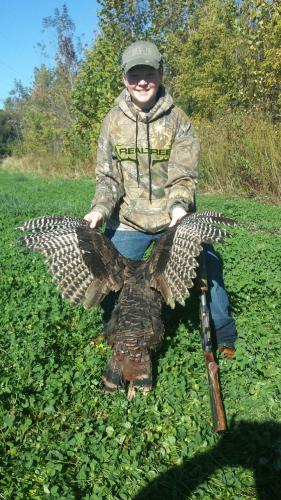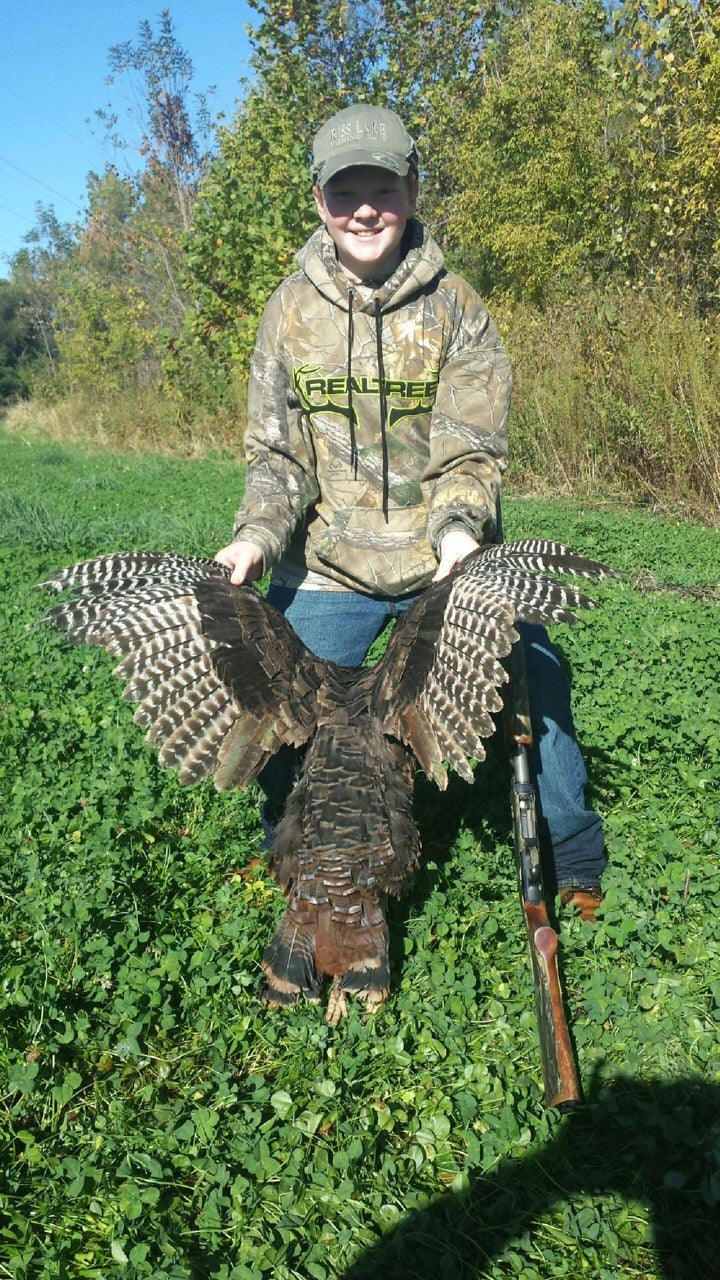
Xplor reconnects kids to nature and helps them find adventure in their own backyard. Free to residents of Missouri.








JEFFERSON CITY–Not many years ago, the conventional wisdom was that hunting was a relic of America’s pioneer past. From the 1960s until recently, fewer people hunted every year. Thanks to a combination of government and citizen action, some types of hunting are on the rise, while others remain stable.
Efforts to reverse the decline in hunting participation in Missouri date back to the 1990s, when biologists with the Department of Conservation began to wonder if the day might come when Missouri had too few hunters to manage populations of deer and other game animals. The downward trend concerned biologists for other reasons, as well. Deer hunting is a powerful economic engine, creating more than $1 billion in economic activity annually for communities and businesses, large and small. And because most Conservation Department biologists are hunters, they worried about the potential loss of treasured cultural and family traditions.
To address these concerns, the Conservation Department reduced the price of permits for young hunters, instituted special youth seasons to create mentoring opportunities, and created the Apprentice Hunter Authorization, which enables people interested in hunting to give it a try for two years before taking hunter education. It also created hunting-skills workshops to shorten novice hunters’ learning curve. Most recently, the agency revamped its hunter-education course to make it more convenient and user-friendly.
Important as these measures might be, they do little to address the most important tool in hunter recruitment – mentorship. Successful hunting requires a depth of knowledge that takes unaided beginners years to acquire. Learning from an experienced hunter shortens this learning curve dramatically.
In keeping with the Show-Me State’s long history of citizen-led conservation, individual hunters have stepped up to fill this gap. Individual mentorship has always been the mainstay of hunter recruitment. No one called it “mentorship” 30 years ago. Youngsters simply took up hunting because a relative or friend showed them how. That changed gradually as families became more scattered and increasingly lived in cities, rather than close to the land.
One-on-one mentorship requires more deliberate effort today than it did historically. Time available for hunting is more limited in families where both parents work. Also, children are more involved than ever in team sports and other organized activities. Finally, few people today live in places where they can walk out their back doors and hunt. Fewer still live in close proximity to friends or relatives who hunt. It takes a conscious effort to make time in busy schedules, make connections with landowners and mentors, and travel to hunting areas.
In spite of such challenges, individual hunting mentorship is alive and well in Missouri. As in the past, it most often begins at home. Jamie Floyd, of Warrensburg, is a prime example. He started his two sons early. Nine-year-old Justin shot his first deer in 2010. Julian, age 7, joined the fraternity of deer slayers during the early youth portion of the 2013 deer season.
“We spend as much time as we can on my uncle’s farm in Cedar County,” says Jamie. “That 266 acres was our family homestead, the place where I shot my first deer in 1985, and the place where both my boys now have harvested their first deer. Whether they know it or not, the youth deer season has served as the ultimate classroom for them. It’s not just lessons on firearms safety and hunting ethics, but everyday lessons that I’m convinced they will use throughout their lives.”
Their classroom had a starry ceiling on opening morning of the early youth hunt. Jamie and his boys were in the woods in time to hear the sounds of awakening wildlife, including a wild turkey roosted a mere 30 feet from their extra-large tree stand. Squirrels, a family of raccoons, and a coyote helped the trio pass the early hours. Whispered conversations focused on these and other natural wonders. Leftover Halloween candy staved off growling stomachs. If all this activity made them less stealthy than adult hunters, that was okay with Jamie.
“It’s their time,” he says. “If they are busted by a whitetail, we’ll just chalk that up to a learning opportunity. They learn it doesn’t take very much movement to scatter a flock of turkeys.”
Julian surprised his dad by being first to spy a deer.
“Dad! Dad! Dad!” the boy whispered excitedly, pointing to an 8-point buck standing just 40 yards away. The habits learned in practice sessions at the shooting range kicked in, and Julian dropped the buck where it stood with one shot. The next day it was Justin’s turn, as he made a 90-yard shot on a 5-point buck.
Julian’s deer is the largest ever taken at the family farm.
“What a confidence booster for a little guy who didn’t believe he would ever get a deer,” says Jamie. “Words can’t describe the joy and pride those times give me as a father. I’m thankful for the father-and-son moments shared over the course of that weekend. No TV or video games, just the Missouri forest full of life.”
Sometimes mentors are surprised at the intensity of their protégé’s interest. That was the case with Sterling Scott and his son, Sterling Junior, known in his family as “S2.” His dad made sure he got an early exposure to both hunting and fishing and was surprised when S2’s interest quickly blossomed into obsession. Besides having taken deer and turkey, S2 is an avid angler. By age 10, he held four records for fish caught from the lake where they live.
Excitement kept S2 awake much of the night before his first duck hunt with his dad in November. He bounced out of bed at 3:30 a.m. and was in a cold pit blind by 5:30. As they watched the sun paint the eastern horizon pink and mauve, lad and dad recounted their comical adventure the day before when they tried on and purchased chest waders at the Kansas City Cabela’s.
“I thought I was going to have to call search and rescue to get me out of those things,” the elder Scott said of his struggle to remove the toe-to-chin neoprene garment. “I know the sales girl was trying her best not to laugh at us, but it was funny.”
In terms of excitement, that was the high point of their first duck hunt together. But the lack of action gave S2 plenty of time to quiz his host about equipment, calling technique, and how to create a decoy spread that entices ducks to land where you want them. He also made a lifelong friend of the golden retriever who shared their blind that morning, and he got to put the dog though her paces with retrieving dummies following the hunt. Back at their truck, they both learned a trick that makes chest waders a cinch to put on and take off.
“Experiences like this add up,” said Scott as he watched boy and dog burning off pent-up energy. “This morning is a memory we will have forever, and it gives us something to build on. I know S2 is going to want to go duck hunting again.”
Other Missourians join forces to bring along the next generation of hunters. The Missouri Hunting Heritage Federation (MHHF) is a good example. It got its start in 2006, when several Kansas City-area hunter education instructors decided to help hunter-education graduates take the next step and actually go hunting. Now incorporated as a 501(c) (3) organization with a paid executive director, the MHHF pairs aspiring young hunters and their guardians with guides for deer, turkey, squirrel, waterfowl, and upland game bird hunting and furbearer trapping.
MHHF uses an intensive workshop model. Participants complete a hunter education class, practice firearms handling skills in a live-fire exercise, and go on a guided hunt, all in one weekend. To date, more than 250 families have taken part in MHHF events. Fifty-three of those families attended the nine events held in 2013. MHHF Executive Director Jeffrey Blackton says they hope to host 14 events in 2014.
MHHF is looking for hunters, landowners, and hunter-education instructors who are interested in starting local MHHF chapters throughout the state. More information is available at mhhf.us/.
Another example of joint citizen action is an annual event organized by Faron Teague and a few friends. Teague is the owner of Indian Trail Archery and Guns in Salem. Each year during the early youth portion of firearms deer season, Teague transforms his archery shop into the local hub of activity for young hunters. They call it Deer Camp.
Teague and his friends prepare 10 gallons of venison chili. They unlock the doors around dawn on opening day and stay open until after dark, serving chili and hot dogs to everyone who brings in deer or comes to see deer others bring in. On Sunday, they repeat the ritual.
Every youngster who brings in a deer gets a photo with their deer.
“I don’t think I’ve ever told one to smile,” says Teague. “That’s one of my favorite parts of the whole thing – seeing the huge smiles on kids’ faces when they bring in their deer.”
Besides having their pictures taken, successful hunters are entered in a drawing for prizes, which are underwritten by local businesses. Last year’s prizes included a big aluminum-sided hunting blind and 50 Leatherman multi-tools.
The most coveted drawing prize each year is a taxidermy mount of a deer. This is awarded as part of the drawing, without regard to the deer’s size or sex. One of Teague’s favorite memories is of a girl who was so thrilled with her mounted buck head that she held it in her arms throughout the 25-mile drive home from the taxidermist.
Deer Camp just completed its fifth year. Early on, Teague and his partners provided the labor and $500 to $1,000 needed to stage the event. As the event grew, they started putting out a contribution can for those who want to help with costs. They also get help from the Current River Chapter of the National Rifle Association, members of the Missouri Chapter of the Rocky Mountain Elk Foundation, and local businesses. But they would still do it regardless of outside support.
“It’s worth every penny,” says Teague. “It’s kind of my pre-Christmas present to me. Honestly, it’s the most fun thing they’ll ever do. The kids that come in here have an excitement I lost years ago. It’s all new to them. It’s the same as when I sell a bow to a young person. I love to look in their eyes when they first shoot. When they hit the center of the target, that’s a look you’ll never see again.”
Beyond the pleasure it gives him and his band of “loafers,” Teague sees Deer Camp as an investment in the future.
“The average age of Missouri deer hunters is going up,” says Teague. “If we don’t get young people involved in our sport, we’re going to lose them.”
Do you know a boy or girl who has shown an interest in outdoor activities but whose family doesn’t hunt? Does one of your coworkers ask you about hunting? They might be waiting for an invitation.